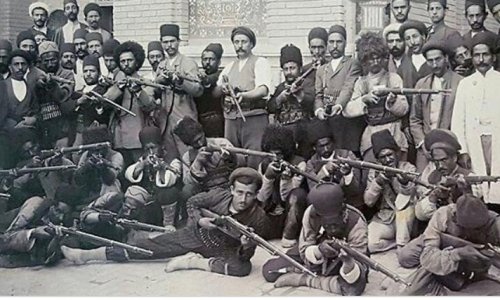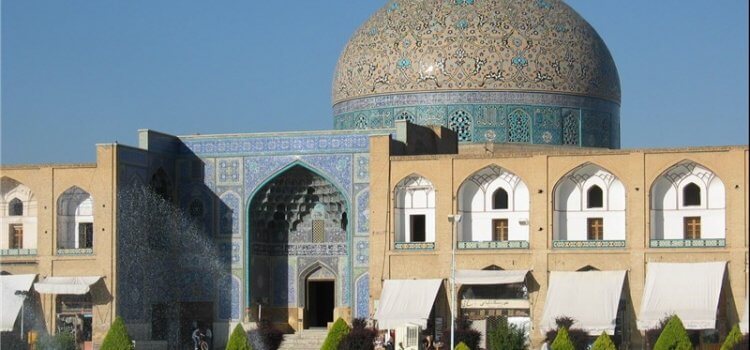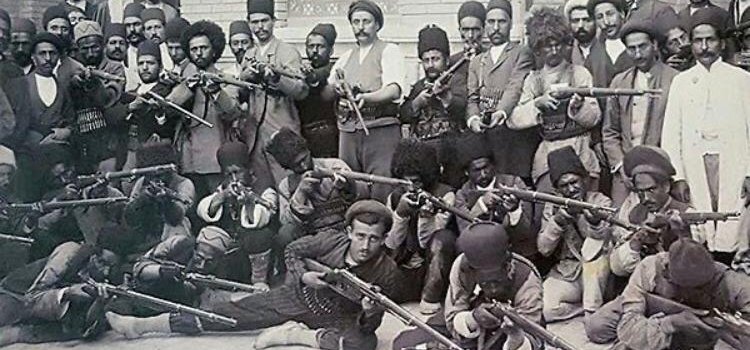Sheikh Lotfollah
Sheikh Lotfollah was one of these doctors of religion who came from Lebanon to Iran
During the Safavid period, Iran was sandwiched between neighboring Sunni countries. Ottoman Turks, the most powerful of them all, were always threatening the boundaries of the Safavid Empire and a slight mistake meant losing the country. So, Safavid kings decided to establish Shiism as the dominant religion in Iran. As a result of these piolitical changes, a large number of Shiite scholars and faqihs migrated from Bahrain and Lebanon to Iran. Sheikh Lotfollah was one of these doctors of religion who came from Lebanon to Iran. First, he lodged in Mashhad but when Uzbecks attacked Mashhad, he moved to teach in Qazvin.
After a while, Shah Abbas invited Sheikh Lotfollah to Isfahan, married his daughter and built him a school and mosque in Naghsh-e Jahan Square, where he occupied the position of the Imam of the mosque and a teacher of religious matters until he died in 1623.
A page of iranian History
1909, Iran, the first Middle Eastern country to have a constitution since 1906, finds itself in chaos.
On the one hand, the king, supported by the Russians and taking advantage of the support of the Cossack brigade
A page of iranian History
1909, Iran, the first Middle Eastern country to have a constitution since 1906, finds itself in chaos.
On the one hand, the king, supported by the Russians and taking advantage of the support of the Cossack brigade, abdicates in favor of the crown prince, an act forced by the constitutionalists.
On the other hand the Majles suffers from the lack of sovereignty and the budget necessary to carry out its reforms, ideological differences also disturb the good understanding between parliamentarians.
Taghizadeh, the leader of the Democratic Party, some of whose members have Russian citizenship, opposing the demands of clerics in the legislature, is convicted of “ideological corruption”. He is condemned to death and flees the country.
His opponent, Seyyed Behbahani, representative of the moderate party, is assassinated by a radical activist as he prepares to read Taghizade’s sentence in the Majles court.
One of the heroes of this revolution is a chief of the Bakhtiari tribe, Sardar Asaad, close to the British and having sided with the constitutionalists. He led his tribal army to the capital, and worked for its liberation. He was rewarded and honored by being appointed governor of Tehran.
A decision was finally taken by the government, until then inert, to try to improve the financial situation of the country: the recruitment of an American financial mission and Swedish officers to organize an armed force capable of counterbalancing the power of the country. Cossack brigade. The choice falls on politically neutral countries.
Morgan Shuster (1877-1960), an American, was appointed Treasurer General of Persia and arrived in May 1911 at the head of a delegation of five financial advisers. It will work to put an end to financial abuses, such as corruption, privileges and foreign interference. All the evils from which the very young democracy suffered, which failed to change mentalities and the balance of power despite this revolution, is what he lets us understand in his autobiography.
Shuster also highlights the cultural distance between American advisers convinced of the benefits of a modern and efficient administration, and the reality of a traditional society, very hierarchical, where the complex relations of allegiance and parenthood guaranteed to individuals what ‘no rational law could offer them.
Shuster’s main enemies were the Russian and British delegations. The Russians still strongly present in northern Iran and the British trying to weaken the skills of the treasurer general, with the aim of obtaining the government’s approval for a new loan of 1,250,000 pounds.
Faced with so much hostility and pressure from the Russian-British “alliance”, Shuster was prematurely dismissed.
The Russians commit a coup in Tabriz, and the hanging of certain constitutionalists causing declarations of solidarity in Europe in socialist circles.
They will also show extreme brutality in Mashad on March 30, 1912, bombarding Imam Reza’s shrine and machine-gunning the crowd to disperse it killing 500 people.
The European press, occupied by the Titanic wreck, will not talk about it.
The situation was less dire in the south, where the population resisted British occupation.
Six years after the first demonstrations, the constitutional revolution was sinking into chaos.
One of the reasons for the failure of the constitution was due to the religious movement which had refused to follow through on a democratic logic, bounded by the limits of traditional theological discourse.
The differences of opinion of the constitutionalists were also fatal.
Reformers should no longer rely on outside support. Foreign interference was increasingly visible and brutal. Notably that of the British, on whom the Iranian liberals had initially based the hope of support against absolutism. Henceforth, it was with Russian socialist ideas that they were going to be united …



